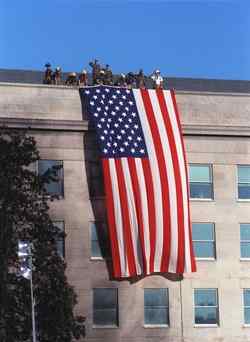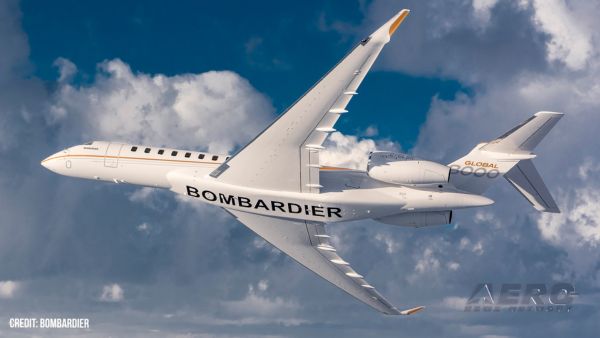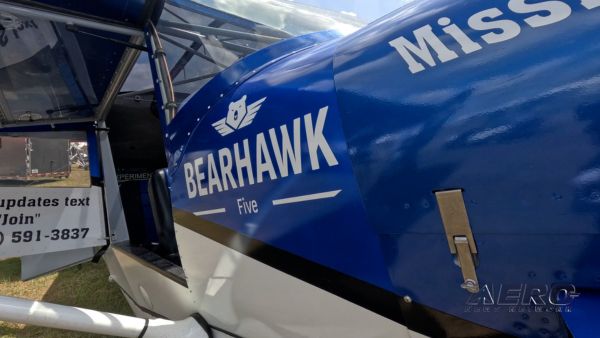By ANN News Editor Tim Kern
 US Airways is in Chapter 11 bankruptcy; United's
stock is at 1950s prices, as it slides toward Chapter 11; AMR's
saying it's going to be many years before record losses are made
up; Boeing Credit is looking at $1.2 billion in UAL's debt,
possibly about to become "non-performing" -- Where will it end?
US Airways is in Chapter 11 bankruptcy; United's
stock is at 1950s prices, as it slides toward Chapter 11; AMR's
saying it's going to be many years before record losses are made
up; Boeing Credit is looking at $1.2 billion in UAL's debt,
possibly about to become "non-performing" -- Where will it end?
September 11 changed the world. For one thing, it reduced the
amount of air travel that people wanted to get themselves into. For
another, it changed the regulatory climate that surrounds
aviation.
It didn't start in September.
 It's not as though the airlines were having a
great time, even before September 11. Most large, full-fare
("premium") carriers were either trying to sell themselves, or buy
someone else, to cut duplicative overhead and gate fees. As we
followed last year's merger rumors, just about every old airline
was paired up as a prospective partner with just about every other
old airline. In other words, it wasn't just TWA/American; or even
US Airways/United. It was KLM/BA, SAS/Iberia -- you name it.
It's not as though the airlines were having a
great time, even before September 11. Most large, full-fare
("premium") carriers were either trying to sell themselves, or buy
someone else, to cut duplicative overhead and gate fees. As we
followed last year's merger rumors, just about every old airline
was paired up as a prospective partner with just about every other
old airline. In other words, it wasn't just TWA/American; or even
US Airways/United. It was KLM/BA, SAS/Iberia -- you name it.
Governments, always concerned about their power (and masking it
in the cloak of "protecting competition"), played the power games,
and thwarted any number of smart (and not-so-smart) ideas. [Whether
the ideas were "smart" or not isn't really the governments'
problem; and the meddling cost all parties a lot of money, when
things were already tight.] Whether a particular merger "hurts"
competition is also something governments have been profoundly
unable to understand, anyway. US Airways and United, for instance,
would have been a "bad" union for the competition, because UAL was
already the parent of the world's largest airline. TWA/American,
though, was "good," because it created the world's largest airline.
Only a politician could make that line of reasoning sound sincere.
As it turns out, both US Airways and United now could soon be
crow's food, increasing American's size advantage: the exact
opposite of "promoting competition."
 Anyway, it's
not just the governments that caused the problems for airlines. Far
from it: for many years, premium airlines have been building their
hub-and-spoke systems, counting on greater throughput at their
hubs, and faster turnaround of the airplanes. People who lived in a
hub city (New York, Chicago, Atlanta, Dallas, Minneapolis, Los
Angeles, Denver, Charlotte -- even St Louis) had a pretty easy time
of things, especially if they were headed to another hub; but
America's demographics are changing, and the hub system isn't as
convenient as point-to-point.
Anyway, it's
not just the governments that caused the problems for airlines. Far
from it: for many years, premium airlines have been building their
hub-and-spoke systems, counting on greater throughput at their
hubs, and faster turnaround of the airplanes. People who lived in a
hub city (New York, Chicago, Atlanta, Dallas, Minneapolis, Los
Angeles, Denver, Charlotte -- even St Louis) had a pretty easy time
of things, especially if they were headed to another hub; but
America's demographics are changing, and the hub system isn't as
convenient as point-to-point.
Brand loyalty overcame lots of operational faults.
The inconvenience factor was long-recognized as a threat to
the airlines' bread and butter; so they developed a tactic
that supported brand loyalty. The premium airlines created a
dependence on them, in the form of perqs.
 Frequent flier mileage programs were a brilliant
marketing tool, that kept overpaid business travelers coming back,
ever willing to spend a little more of the company's money,
because, after 20,000 miles, they could fly free somewhere. Think
what you will about the intrinsic value of the programs; they
worked. Travel agencies were steered away from lower-cost carriers
by the (maybe 5%) implied discount of the free flights their
customers wanted; corporate travel departments were eager to get
their little gifts at their end, for recommending the
more-expensive trips. Low-cost competitors couldn't gain a foothold
in secondary-market cities, their natural realm. The premium
airlines held a tight grip on business travelers.
Frequent flier mileage programs were a brilliant
marketing tool, that kept overpaid business travelers coming back,
ever willing to spend a little more of the company's money,
because, after 20,000 miles, they could fly free somewhere. Think
what you will about the intrinsic value of the programs; they
worked. Travel agencies were steered away from lower-cost carriers
by the (maybe 5%) implied discount of the free flights their
customers wanted; corporate travel departments were eager to get
their little gifts at their end, for recommending the
more-expensive trips. Low-cost competitors couldn't gain a foothold
in secondary-market cities, their natural realm. The premium
airlines held a tight grip on business travelers.
Until September 11. After that day, business travelers didn't
want the free trips; they actually preferred to stay at
home, rather than even fly free. Frequent flier perqs didn't have
the same allure. Meetings that could be attended over telephone
lines didn't generate plane tickets any more. Nobody actually feels
safe on an airliner; not after September 11.
Security: another stone in the life preserver
 Since the
public understood full well that airline security wasn't breached
on September 11 (all the hijackers' tools were legal-carry at the
time), the public's faith in the government that made all the
safety rules plummeted. Rather than let airlines compete to offer
the best security that people were willing to pay for (in other
words, "protecting competition"), government, which rules had
already proven inadequate, decided to eliminate competition
altogether, and take over the system.
Since the
public understood full well that airline security wasn't breached
on September 11 (all the hijackers' tools were legal-carry at the
time), the public's faith in the government that made all the
safety rules plummeted. Rather than let airlines compete to offer
the best security that people were willing to pay for (in other
words, "protecting competition"), government, which rules had
already proven inadequate, decided to eliminate competition
altogether, and take over the system.
Results were predictable: longer lines, greater costs, more
hassles, enhanced idiocy. These additional negatives were about all
the public could take. No longer was a vacation airline trip
something to be treasured. The dread of going through endless
lines, of waiting two hours for every flight -- these kinds of
thoughts took the casual traveler right out of the picture.
Business travelers -- those who simply couldn't avoid those
meetings -- opted to take their cars, on trips of as many as five
hundred miles. [At three hundred miles, it's generally a
no-brainer: the car wins. Beyond that, and up to about five hundred
miles, it's more a matter of taste. After five hundred miles, the
airlines clearly have the edge, even now --TK]
Added to the hassles of security were the additional costs.
Airlines had always figured the costs of their security into
their ticket prices. Under the new socialized program, not only
were travelers paying an extra fee for every leg; taxpayers who
didn't even fly were paying the salaries of $150,000+ "airport
czars," most of whom were already drawing fat government pension
checks. And security didn't get better -- just more-intrusive, and
more publicly-stupid.
The allure of the airliner is gone.
So, what's the future?
 Not
too surprisingly, the only big airline in the USA that
made money all along was Southwest. It's arguably the best-managed
big airline in the world; and it serves as the model for virtually
all the world's other money-making jet airlines. Southwest keeps
its overhead low, and its management flat. It doesn't need to join
other airlines, to consolidate its overhead functions. It doesn't
try to match every second-string airline that comes onto its
routes; it doesn't have to -- they don't see why they should
compete with an already-low-cost provider. The [late] Vanguards of
the world don't see Southwest's routes as attractive -- that's why
they jump on the high-bucks, premium-only routes. [And that's why
they get their head kicked in, as the premium airlines use their
other routes to subsidize their Vanguard-matching fares in selected
towns, and their perqs to keep their regulars, until the little
airline is simply drained, and leaves... or dies.]
Not
too surprisingly, the only big airline in the USA that
made money all along was Southwest. It's arguably the best-managed
big airline in the world; and it serves as the model for virtually
all the world's other money-making jet airlines. Southwest keeps
its overhead low, and its management flat. It doesn't need to join
other airlines, to consolidate its overhead functions. It doesn't
try to match every second-string airline that comes onto its
routes; it doesn't have to -- they don't see why they should
compete with an already-low-cost provider. The [late] Vanguards of
the world don't see Southwest's routes as attractive -- that's why
they jump on the high-bucks, premium-only routes. [And that's why
they get their head kicked in, as the premium airlines use their
other routes to subsidize their Vanguard-matching fares in selected
towns, and their perqs to keep their regulars, until the little
airline is simply drained, and leaves... or dies.]
Now, though, the premium airlines will have to change. Lower
overhead (when was the last time you had a meal to complain about,
on a major airline?), lower executive salaries, a
"don't-just-roll-over" attitude toward union demands, ever-earlier
retirement ages, more internet ticketing (ask travel agents who's
their friend, now) -- there are many ways they've already begun.
There's a long, long way to go.
Airliner manufacturing
 Airliner-builders will have to change, as well. If Airbus and
Boeing are going to offer something the airlines can use for
short-haul work, it will have to be one quick-turnaround,
low-maintenance little bird. The 717 comes to mind, as do offerings
from both Brazil and Canada. (Airbus, with its common platform idea
taking precedence over route-tailored design, may have missed
the opportunity, at the 100-seat level.) At the other end of the
scale, where thousands of miles separate the "from" and the "to,"
the 777s, 747s and possibly even the A380s have a chance. On these
routes, driving is not an option. However, the sheer numbers of
travelers, and especially new travelers, that huge airliners
require, may halt growth in that sector. Standard airliners (from
727s and A300s to 767s and A340s) will have plenty of
trans-continental work to do; but there is no anticipated growth
there, either.
Airliner-builders will have to change, as well. If Airbus and
Boeing are going to offer something the airlines can use for
short-haul work, it will have to be one quick-turnaround,
low-maintenance little bird. The 717 comes to mind, as do offerings
from both Brazil and Canada. (Airbus, with its common platform idea
taking precedence over route-tailored design, may have missed
the opportunity, at the 100-seat level.) At the other end of the
scale, where thousands of miles separate the "from" and the "to,"
the 777s, 747s and possibly even the A380s have a chance. On these
routes, driving is not an option. However, the sheer numbers of
travelers, and especially new travelers, that huge airliners
require, may halt growth in that sector. Standard airliners (from
727s and A300s to 767s and A340s) will have plenty of
trans-continental work to do; but there is no anticipated growth
there, either.
Simply put, fewer people want to fly. Until more
actually need to (and with communications' improving
everywhere, every day, the importance of the face-to-face meeting
may decline anyway), fewer people will.
Even if airlines all could lower their fares, trim their
operations to the bone, and offer on-time flights -- there's still
the problem of the wasted time and the hassles at the airports.
Nobody wants to get strip-searched by a Rapiscan. Nobody wants to
get felt up by a tired, sweaty, bored, irritated federal worker.
Nobody wants to waste the time saved by flying slowly evaporate, as
the time required for oft-ridiculous "security," increases.
 Point-to-point transportation helps; but it necessarily means
smaller aircraft. Good cars abound, at low prices, and offer a
great alternative to airline tickets, especially for family
travelers. The only thing the airlines don't have to fear is any
sudden ascendancy of rail -- the government runs that, too.
Point-to-point transportation helps; but it necessarily means
smaller aircraft. Good cars abound, at low prices, and offer a
great alternative to airline tickets, especially for family
travelers. The only thing the airlines don't have to fear is any
sudden ascendancy of rail -- the government runs that, too.
 Aero-FAQ: Dave Juwel's Aviation Marketing Stories -- ITBOA BNITBOB
Aero-FAQ: Dave Juwel's Aviation Marketing Stories -- ITBOA BNITBOB Airborne 05.19.25: Kolb v Tornados, Philippine Mars, Blackhawk Antler Theft
Airborne 05.19.25: Kolb v Tornados, Philippine Mars, Blackhawk Antler Theft Klyde Morris (05.19.25)
Klyde Morris (05.19.25) Airborne-NextGen 05.20.25: Drone Regs, Zero-Emission Cargo, Door-Dash Drone
Airborne-NextGen 05.20.25: Drone Regs, Zero-Emission Cargo, Door-Dash Drone Airborne Affordable Flyers 05.22.25: RV-15 Finalizing, OSH NOTAM, Kolb v Tornado
Airborne Affordable Flyers 05.22.25: RV-15 Finalizing, OSH NOTAM, Kolb v Tornado









